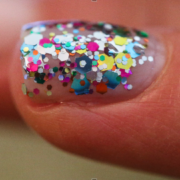Tea Tree Oil Update
de Groot AC, Schmidt E. Tea tree oil: contact allergy and chemical composition. Contact Dermatitis. 2016 Sep;75(3):129-43. doi: 10.1111/cod.12591. Epub 2016 May 13. PMID: 27173437.
Reviewed by Jalal Maghfour and Alina Goldenberg MD
Tee trea oil (TTO) is primarily derived from M. alternifolia, a tree plant native to Australia and can grow naturally in the northern coastal region of New South Wales.
TTO has been known to have a wide variety of health benefits and is considered to be an effective remedy for various skin disorders including acne, eczema and warts.
Although TTO has only been proven to be effective to treat small superficial wounds, it is increasingly being advertised and is a major ingredient in cosmetics and skin products.
As an essential oil, TTO is known to cause allergic contact reactions. In fact, of all essential oils, TTO makes up the majority of the literature on allergic reactions since 1991.
Herein, in this synopsis, we aim to provide a comprehensive overview of TTO, its uses, and composition.
TTO is a colourless to pale yellow, clear liquid extracted from the leaves with terminal branches of M. alternifolia. Commercial TTO is primarily composed of terpinene family. Despite the recommendation set by the International Organization for Standardization (ISO) of essential oils, an analysis of 97 tee tree oil samples demonstrated the variability in the concentrations of the chemical components with some samples exceeding the recommended level.
Given the increase in reports of cutaneous reactions, TTO 5% has been added to the screening series of the North American Contact Dermatitis group (NACDG) since 2003; it is estimated that up to 3.5% of positive patch test reactions result from TTO sensitivity.
Most of the positive patch test reactions are a result of direct sensitization to the following TTO components: ascaridole, terpinolene and α–terpinene. Often time, the severity and extent of allergic reaction due to TTO depends on the type of products used. Application of pure oil can result in both local and systemic cutaneous reactions characterized by oozing and blistering.
It is important to note that the type of product use affects the shape and location of allergic reaction. For instance, dermatitis in the eyelids/periorbital area can manifest following application of soap, cream and shampoo while the use of shaving oil can induce a cutaneous reaction in the involved area. Therefore, it is important for clinicians to inquire about all the products that may contain TTO.
Patch testing remains the diagnostic test of choice. It is recommended to use diluted TTO at 5-10% in pet vehicle. At higher concentrations, severe allergic reactions may occur. Once the diagnosis is confirmed, it is important to counsel patients on the importance of avoiding products containing TTO.


